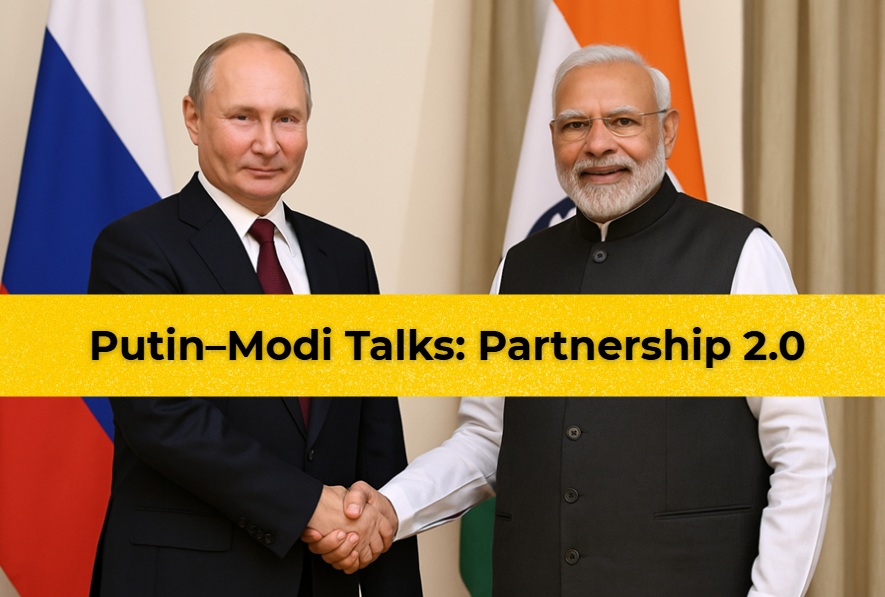Voter lethargy, characterized by apathy, disengagement, and a lack of enthusiasm toward participating in the electoral process, has emerged as a critical issue in modern democracies. Despite the significance of elections in shaping governance and policies, a considerable portion of the population often chooses not to exercise their right to vote. With the BJP aiming to secure victory for the third time with over 400 seats, the risk of voter lethargy looms large.
How Voter Lethargy Has Impacted World Politics
There are several examples from world politics where voter lethargy has influenced election results:
United States Presidential Elections:
In various presidential elections in the United States, voter turnout has fluctuated significantly, impacting outcomes. For instance, in the 2016 presidential election, voter turnout was around 55%, with significant disparities among demographic groups. Lower turnout in key swing states played a role in determining the outcome, contributing to Donald Trump’s victory despite losing the popular vote.
French Presidential Elections:
In the first round of the French presidential elections in 2017, voter turnout was lower compared to previous elections, with only around 77.8% of eligible voters participating. This relatively low turnout had implications for the outcome, allowing unexpected shifts in support among candidates. While Emmanuel Macron eventually won the presidency, voter lethargy contributed to the fragmentation of the political landscape.
Brazilian Presidential Elections:
In Brazil, voter turnout has varied across different elections, significantly impacting outcomes. In the 2018 presidential election, voter turnout was lower than in previous years, particularly among young people and marginalized communities. This lower turnout arguably contributed to Jair Bolsonaro’s victory with a narrower margin than previous presidents.
Causes of Voter Lethargy:
Perception of Political Inefficacy: When individuals perceive their vote as inconsequential or believe that politicians do not genuinely represent their interests, they are more likely to disengage from the electoral process.
Lack of Trust in Institutions: Widespread distrust in political institutions, fueled by corruption scandals, partisan gridlock, and perceived elitism, can lead to voter apathy.
Demographic Factors: Certain demographic groups, such as young adults and marginalized communities, often experience higher levels of voter lethargy due to factors like socioeconomic disparities, lack of political education, and systemic barriers to voting.
Campaign Fatigue: Lengthy and often negative political campaigns can exhaust voters, diminishing their motivation to participate in elections.
Structural Barriers: Obstacles such as restrictive voter registration laws, inaccessible polling locations, and limited voting hours can disenfranchise segments of the population, contributing to voter lethargy.
Impact on Elections:
Decreased Voter Turnout: Voter lethargy inevitably results in lower voter turnout rates, skewing election results and undermining the legitimacy of elected officials.
Influence of Special Interest Groups: In the absence of widespread voter participation, special interest groups and lobbyists may exert disproportionate influence over elected representatives, shaping policies that prioritize their interests over those of the general populace.
Polarization: When only the most ideologically committed voters turn out, elections may produce more polarized outcomes, as candidates appeal to their respective bases rather than seeking consensus among a broader electorate.
Democratic Deficit: Voter lethargy contributes to a democratic deficit, wherein the government’s legitimacy and responsiveness to citizens’ needs are called into question, eroding the foundation of representative democracy.
Policy Implications: Low voter turnout can lead to policy outcomes that do not reflect the preferences or needs of the entire population, perpetuating inequalities and exacerbating social divisions.
What is Election Commission of India (ECI) Is Doing About It:
Systematic Voters’ Education and Electoral Participation (SVEEP) Program: The SVEEP program is a flagship initiative of the Election Commission of India aimed at educating and motivating voters to participate in the electoral process. It employs various strategies such as voter awareness campaigns, voter registration drives, street plays, cultural events, and interactive workshops to engage citizens across diverse demographics. The SVEEP program utilizes innovative approaches to reach out to first-time voters, marginalized communities, and youth, encouraging them to exercise their right to vote. The SVEEP program in 2010 resulted in India creating a turnout record in the Lok Sabha elections of 2014. In 2009, the voting percentage stood at 58%, which rose to 66.4% in 2014 and 67.6% in 2019. Now, the ECI hopes to push it past 70%.
Voter Registration Drives: The Election Commission is organizing voter registration drives to ensure that eligible citizens are registered to vote. These drives may involve setting up registration booths at public events, schools, workplaces, and community centers, as well as conducting door-to-door outreach efforts to reach individuals who may not be registered. In the Lok Sabha election of 2024, over 97 crore eligible voters (49.7 crore male, 47.1 crore female) are registered.
Security Concerns: Security issues in certain regions may deter voters from going to polling stations, particularly during tense periods or in areas affected by conflict or insurgency. Additionally, instances of voter suppression, such as intimidation and violence in some regions, discourage voter turnout. To address the issue, the ECI is organizing the Lok Sabha Election 2024 in seven phases from April 19 to June 1, so necessary security arrangements can be made during the voting days.

Outreach to Marginalized Communities: The Election Commission is making targeted efforts to engage marginalized and underrepresented communities, including ethnic minorities, indigenous groups, persons with disabilities, and socioeconomically disadvantaged populations. This may involve providing voter education materials in multiple languages, offering accessible voting options, and addressing barriers to participation, such as transportation issues or language barriers.
Expansion of Voting Options: The Election Commission explores and implements measures to expand voting options and make voting more convenient for citizens. This may include introducing early voting periods, allowing mail-in or absentee voting, establishing mobile polling stations, and providing electronic voting options where feasible. The ECI has declared polling booths at more than 10.5 lakh locations. There are over 81 lakhs of 85+ aged voters and 90 lakhs PwD voters registered across the country. Election Commission of India (ECI) has introduced doorstep voting for the elderly (persons aged 85 years and above) and Persons with Disabilities (PwD) in the Lok Sabha election 2024.
Collaboration with Civil Society Organizations: The Election Commission is collaborating with civil society organizations, non-governmental organizations (NGOs), and community groups to promote voter engagement and mobilize grassroots efforts to increase voter turnout. This may involve innovative ways to raise voter awareness, such as putting election messages on public transport and sanitation vehicles, incorporating them into utility bills collaborations with RWAs and voter awareness forums; hosting informative sessions at parks, malls, etc.; organizing events like marathons, walkathons, etc., to ignite voter interest; and disseminating voter education content via hoardings, digital spaces, kiosks, and social media.
Technology Integration: The Election Commission is leveraging technology to streamline the electoral process and enhance accessibility for voters. This may include using online voter registration systems, electronic voting machines, voter information portals, and mobile applications to provide voters with information about polling locations, candidate profiles, and election updates.
Public Awareness Campaigns: The Election Commission is launching public awareness campaigns leading up to elections to remind citizens of upcoming voting dates, polling locations, and voting requirements. These campaigns often utilize mass media, social media platforms, outdoor advertising, and public service announcements to reach a broad audience and encourage voter participation.
One Nation One Election: Addressing voter fatigue by reducing the frequency of elections, as mentioned in the context of “One Nation One Election,” could help sustain voter enthusiasm. Steps are being taken to implement the same in future elections.
Voter lethargy poses a challenge to the vitality and legitimacy of democratic governance. By understanding its root causes and consequences, policymakers, civil society organizations, and citizens alike are working collaboratively to address this issue and revitalize democracy. We can hope for a better turnout record in the Lok Sabha elections of 2014.





